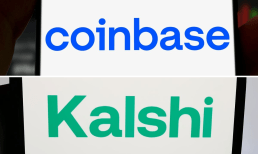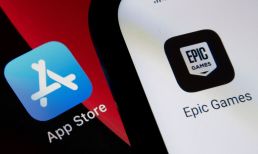“We’re riding an extraordinary platform wave,” said Kevin Scott, Microsoft’s chief technology officer and executive vice president of AI, likening AI’s transformative potential to the rise of personal computers and broadband internet. “We are nowhere near … how powerful we can make AI models.”
Scott also emphasized the importance of OpenAI’s latest language model, GPT-4o, which powers many of Microsoft’s new AI features. “It’s 12x cheaper to make a call to GPT-4o than the original model,” he said. “It’s also 6x faster in time to open response.” These speed increases and cost decreases are crucial for the widespread adoption of AI, but Scott believes this is just the beginning. “Things will get cheaper and more robust over time,” he said.
Copilot Plus PCs Feature AI
Microsoft CEO Satya Nadella kicked off the event by highlighting the company’s recent progress in AI, including the launch of new Arm-powered “Copilot Plus PCs” with advanced AI capabilities built directly into Windows 11. These devices leverage Microsoft’s new Windows Copilot Runtime, which includes over 40 AI models. “Windows is the most open platform for AI,” said Pavan Davuluri, Microsoft’s Windows and Surface chief.
Nathaniel Whittemore, CEO of AI education company Superintelligent, told PYMNTS that the new AI PCs are a significant advance.
“For anyone wondering whether ‘AI PCs’ were going to be more than just a keyboard button to pull up a chatbot, Microsoft has answered with a resounding ‘yup,’” Whittemore said. He noted that the Microsoft Build event quickly gained traction on social media platforms like AI Twitter and X, with the focus primarily on the new AI-powered PCs dubbed Copilot+PC.
Advertisement: Scroll to Continue
Whittemore highlighted two key features that stood out to him. First, the integrated assistant is built natively into Windows, which can observe the user’s screen and interact with them, similar to ChatGPT Desktop, which recently launched exclusively for Mac. Second, the Recall feature allows Copilot to search through all local user interactions, essentially providing users with a photographic memory of everything they’ve done on their computer. Whittemore emphasized that all data processing occurs locally, without any information being sent to the cloud or used for training purposes.
“At the rate we’re going, it’s not going to take long before it will feel strange being on a computer that can’t see your screen and talk to you about what you’re doing,” Whittemore predicted.
The Windows Copilot Runtime is a crucial component of Microsoft’s AI strategy, providing developers with a library of APIs to integrate AI features into their apps. “Windows Copilot Library consists of ready-to-use AI APIs like Studio Effects, Live Captions Translations, OCR, Recall with User Activity, and Phi Silica, which will be available to developers in June,” Davuluri said.
With minimal coding, developers can use the Windows Copilot Library to incorporate features like background blur, eye contact and AI-powered translation into their apps. Meta, for example, is adding Windows Studio Effects into WhatsApp for enhanced video calling features.
Microsoft also introduced the Recall AI feature, which allows Copilot Plus PCs to document and store user activity for easy searching and memory recall. This functionality is powered by the Windows Semantic Index, which stores data locally. “We will make this capability available for developers with Vector Embeddings API to build their own vector store and RAG within their applications and with their app data,” said Davuluri.
Developers can further enhance the Recall feature by adding contextual information from their apps to the database, improving app engagement and user flow between Windows and the app.
These improvements in Windows for developers lay the foundation for more AI-powered apps on Arm-powered systems and upcoming NPUs from AMD and Intel.
Partnerships
Microsoft also announced partnerships and tools to bring AI to more developers and users. The company is teaming with nonprofit Khan Academy to offer AI-powered tutoring tools to all U.S. educators at no cost.
GitHub Copilot, the company’s AI-powered coding tool, now boasts 1.8 million paid subscribers. Microsoft announced the launch of GitHub Copilot extensions to make the service even more extensible.
The tech giant also showcased AI enhancements for its productivity tools, including a Team Copilot AI assistant that can manage meeting agendas, moderate lengthy team chats, assign tasks, and track deadlines in Microsoft Planner. Other improvements include the ability to paste source code inside Teams with syntax formatting, co-editing with Loop, better keyboard shortcuts and custom emojis.
The Race for AI Heats Up
Microsoft’s aggressive push into AI comes at a crucial time for the tech industry as companies race to integrate generative AI capabilities into their products and services. The announcements at Build demonstrate Microsoft’s commitment to staying at the forefront of this rapidly evolving field, leveraging its partnerships with OpenAI and other key players.
However, the company faces stiff competition from rivals like Google, which recently unveiled its own AI-powered tools and services at its I/O developer conference.
The success of Microsoft’s AI strategy will heavily depend on developers’ adoption of its tools and platforms. The company aims to make it easier for developers to create AI-powered apps and experiences on Windows by providing a comprehensive suite of APIs, frameworks and pre-built models. Still, it will be up to developers to build on this foundation and create compelling use cases for AI in everyday computing.
For all PYMNTS AI coverage, subscribe to the daily AI Newsletter.




